by Bill Murray
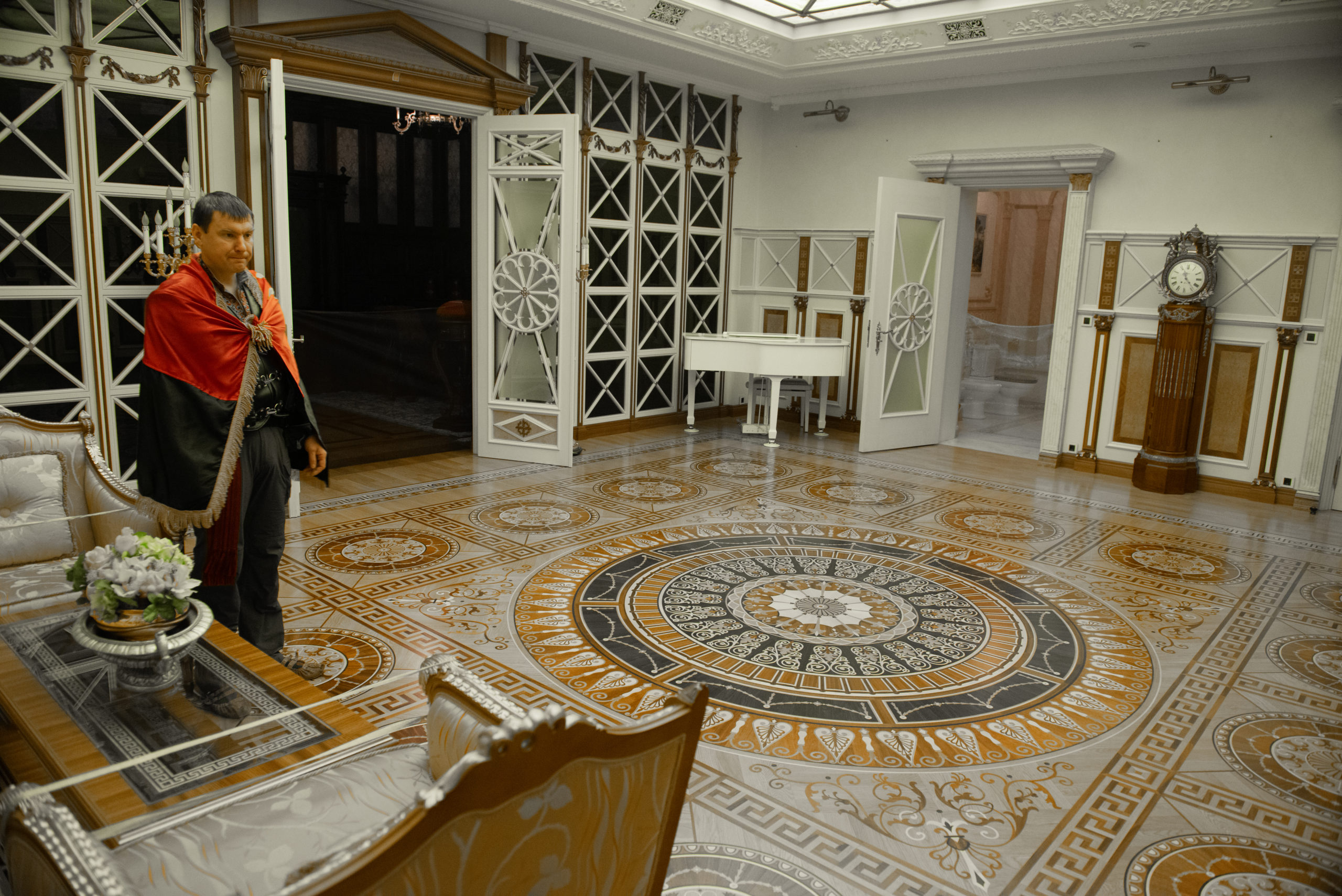
Petro Oliynik wore a flag draped around his shoulders like a cape and didn’t speak. If it wasn’t an act, it was at least a presentation. You don’t often meet a man as unusual as Petro Oliynyk and the truth is, I haven’t really met him either. Maybe better to say I once accompanied him on his daily rounds.
Oliynik’s legend describes him as a simple stallholder in a market in Lviv who was drawn in the pursuit of democracy to the Maidan in Kyiv’s 2014 Revolution of Dignity. In the noble pursuit of righteousness, the story goes, he found his calling at a mansion outside Kyiv, and never left.
Four years ago Petro Oliynyk escorted three of us on a tour through that building north of Kyiv, popularly known as the Honka House. They call it that because the contractor was a Finnish builder of log homes called Honka, but that’s not why you tour it. You tour it because it’s a monument to inveterate corruption and bad taste – to everything Ukraine has been trying to leave behind.
Russia’s invasion of Ukraine is a real human tragedy, doubly so because of where Kyiv was headed. I visited Kyiv twice these last ten years, in 2013 and 2019, and the differences between the first and second trips tell a story.
I can say from experience that getting caught driving 74 kph in a 50 kph zone in 2013 would cost you 260 hryvna, a little more than thirty dollars at the time. The three of us who weren’t the driver wondered, would the cop just take some cash and could we just settle things up right here?
“Of course, this is Ukraine,” Igor, the driver and speed trap victim, told us. Maybe the cop would take two hundred cash.
The thing is, if Igor offered it, it wouldn’t be to save 60 hyrvna. What it would save him was time. He’d pay it to avoid bureaucracy. Otherwise he’d have to go to the bank and pay the fee, then go to the police station and show them he’d paid it, and in navigating the bureaucracy he might miss a day’s work. The bribe could save him a whole day’s pay.
Couldn’t we see, Igor asked, that the whole system was made for bribing? Here was Ukraine, March, 2013: gaming traffic bribes.
But change was coming. The European Union-aspiring public pressured its Russia-indebted government to sign an association agreement with the EU at a summit in Vilnius in November 2013, just the sort of thing guaranteed to stoke the revanchist fury of the man 550 miles up the road in the Kremlin.
The president of Ukraine, Viktor Yanukovych, buckled under intense pressure from Moscow that November ten years ago. When Vladimir Putin threatened to cut off gas supplies in the middle of winter, Yanukovich announced that he would reverse course and seek closer ties with Russia.
No no no. The people of Kyiv would not have it. In the dead of winter, in the dark and biting cold, they surged onto the Maidan and they wouldn’t go home. A snowstorm hit Kyiv in December and the temperature plunged to 14 degrees. In January another blizzard brought the temperature to twelve, yet the protesters stayed at the ramparts.
•••••
The Maidan is the central square in Kyiv, Maidan Nezalezhnosti, or Independence Square. It is the place from which Ukraine determined to dispense with Russia’s man Yanukovych and with Russia once and for all, in what they called the Revolution of Dignity. It was a brutal, frozen, wholesale rejection of Putin, of Russia, of bribes and debasement and historic indignity.
The racketeering, bribing, torturing Ukrainian special police called Berkut, augmented by their Russian counterparts, killed more than a hundred protesters, most of them in a particularly nasty sniping event from buildings surrounding the Maidan, in February 2014. When even this last, desperate atrocity didn’t deter protesters, Moscow’s man in Ukraine fled Kyiv for safety beneath the Russian president’s skirts.
The BBC posted video of what it said was Yanukovych fleeing his country home, called Межигір’я, Mezhyhirja, by helicopter on February 21st. Not by coincidence within days armed men in uniforms without identification marks seized the buildings of the provincial Ukrainian parliament, the Verkhovna Rada, in Simferopol, capital of Crimea, and they have been there since.
The Maidan protests that drove Yanukovych from Ukraine are where Petro Oliynik comes in. Drawn from his market stall in Lviv to protest in Kyiv, Petro Oliynik says he met a man who showed him the news on his phone that Yanukovych’s country house had just been “liberated” and asked if Oliyvnik wanted to go there with him.
Petro Oliynik asked two other men he didn’t know if they wanted to go and these four strangers piled into a car and drove there where, in his own words, he “quickly assumed the responsibility of guarding it – telling others not to destroy or loot the house and the valuables inside.”
•••••
Have you ever been to a sporting event, I’m thinking a baseball pitcher’s duel, where there’s not much action, just a succession of balls and strikes? You might stay – you’d want to be on hand in case it turns out to be a no hitter – but you secretly wish it were finished in about the seventh inning? That’s like seeing Mezhyhirja. You feel like you ought to see such a thing so you stay, but it turns into a run-on pageant of gauche, spread across 340 acres. The entire principality of Monaco is 480 acres. Mezhyhirja is more than twice the size of Camp David.
Mezhyhirja means “between the hills.” It’s a pretty green space along the Dnieper River about 15 miles north of Kyiv that has long been used for government dachas. On paper President Yanukovych’s claim to Mezhyhirja comprised no more than a mere country cabin on a hectare of land which he leased for “314 Ukrainian hryvnia per month, about $39.57 in 2010.”
In truth, at its height the estate employed some 300 gardeners. (And 700 guards. First things first.) Unfortunately for Mr. Yanukovych, he didn’t get much time to enjoy it, only taking delivery in 2010 and having to flee a scant few years later.
While he was there he enjoyed very nice things. His imported natural marble floors. His Italian crystal. His Lebanese cedar doors, each of which cost $64,000. (His girlfriend liked Lebanese cedar too. Her bedroom was done up in it.) One particular gilt and crystal chandelier cost $100,000.
•••••
Part of Petro Oliynik’s mystique was that it was hard to contact him. On the appointed day we loitered about the grounds waiting for much of the morning. The scheme was, Petro would open most days for a morning tour at the time of his choosing and then he would appear again later most days and do the same. But not always. And sometimes he just wouldn’t answer the phone at all.
When Petro was finally ready to receive us, here are some of the features of Viktor Yanukovych’s Honka House and its grounds that he showed us:
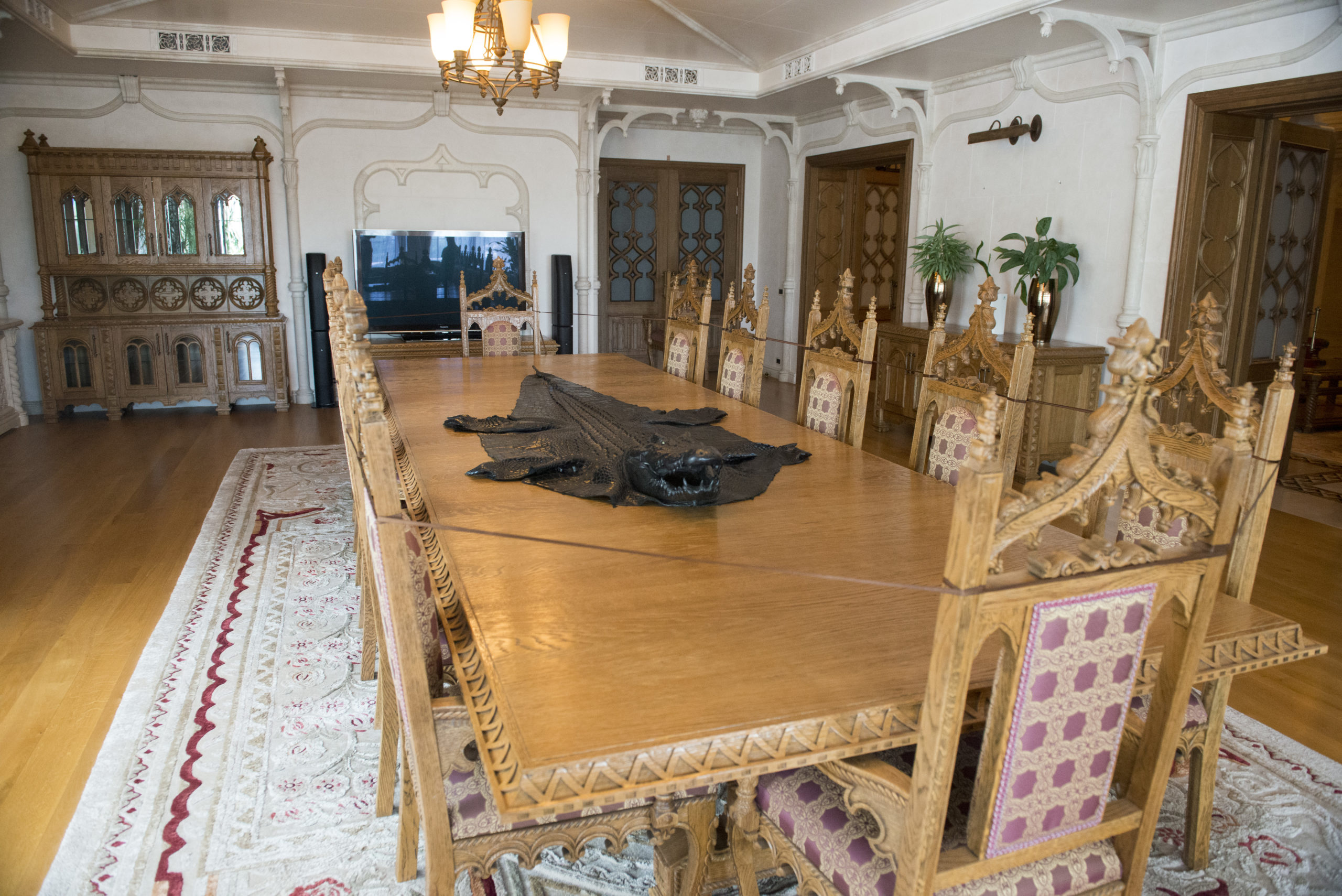
Yanukovich’s dining table for twelve topped by an alligator hide. Because nothing says opulence like a gutted reptile splayed across the table staring at your dinner.
Yanukovych’s and his girlfriend’s bedrooms. They each had a lovely view over the grounds but were decidedly separate. (Yanukovych’s wife Lyudmyla, it was said, stayed back home in Donbas.)
Yanukovych’s Steinway grand piano (which, it says here) was autographed by John Lennon. Not sure about that.
Yanukovych’s boxing ring.
Yanukovych’s four bowling lanes.
Yanukovych’s “wellness complex.” Tanning beds. A cryotherapy chamber. Polish manufacturer CA Manufacturing calls itself “a specialist provider of whole body cryotherapy equipment.” It describes – possibly with some ESL issues – how cryotherapy works: “When your brain sensors sense the extreme cold, it causes blood to flow to the torso to insulate and protect all the vital body organs. Once you step out of the chamber, a lot of oxygenated blood starts to rush to the body organs which help with the healing process.”
“In theory, this makes sense,” it explains.
Down the way there’s a halotherapeutic salt chamber. What’s a halotherapeutic salt chamber? Ah, never mind.
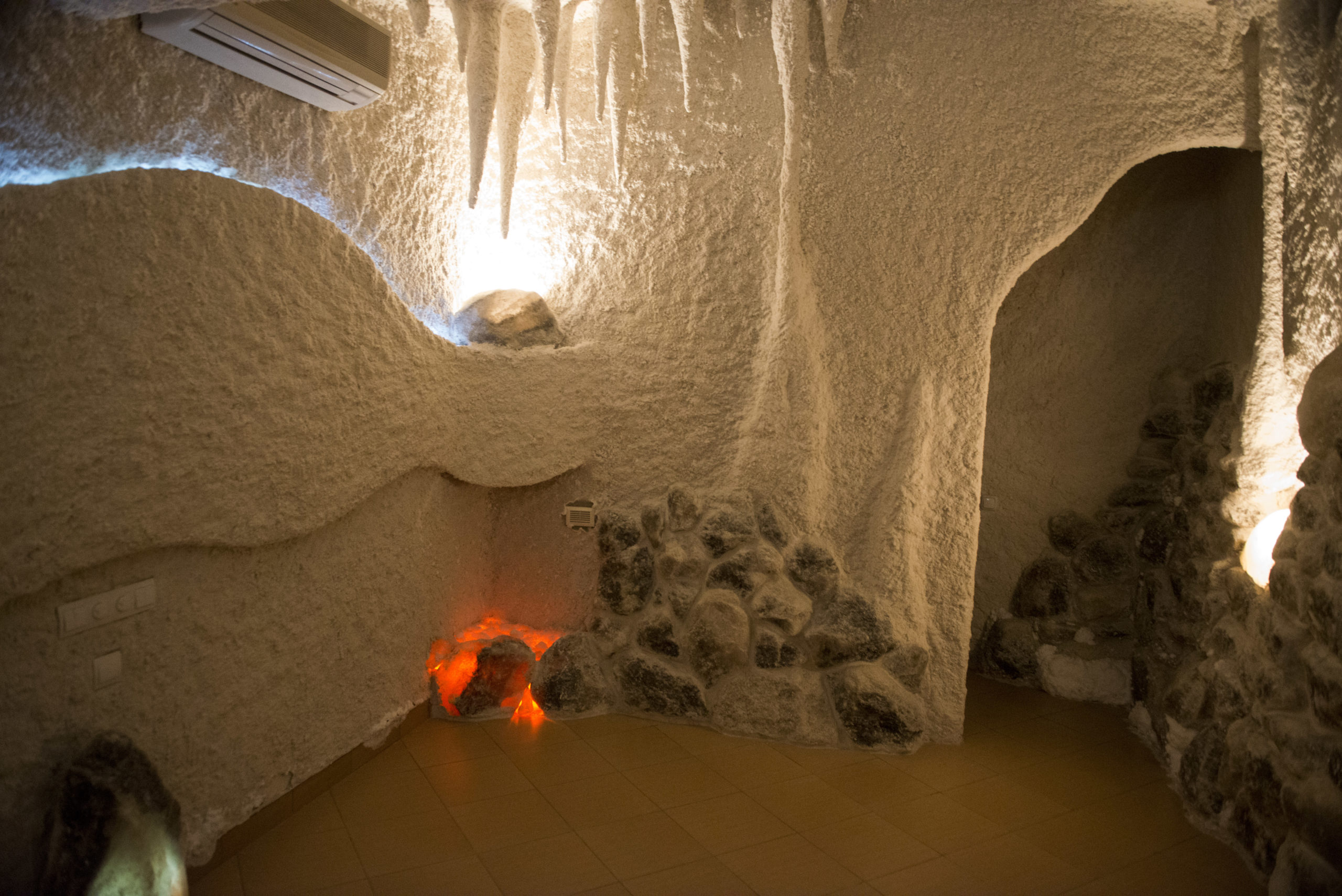
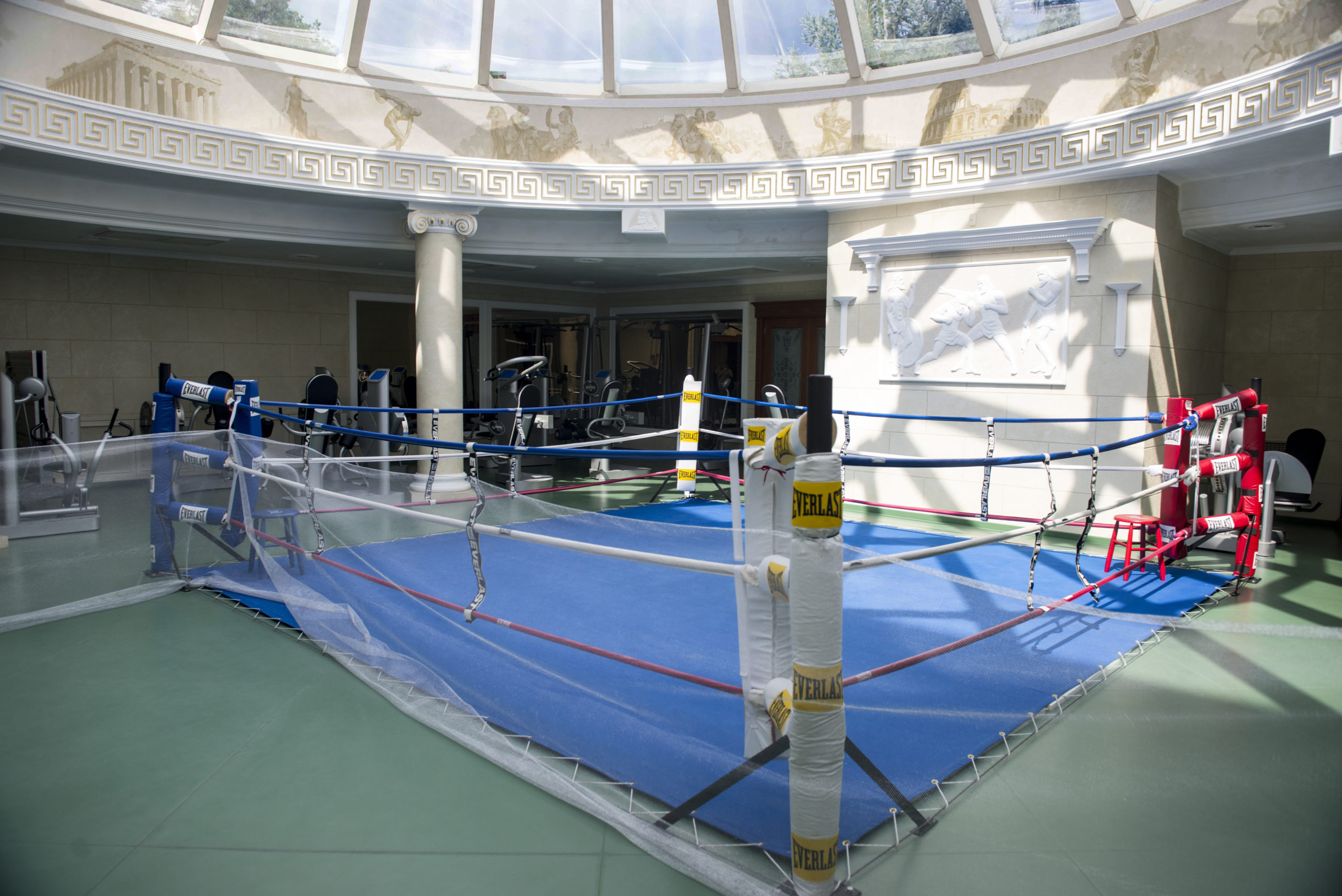
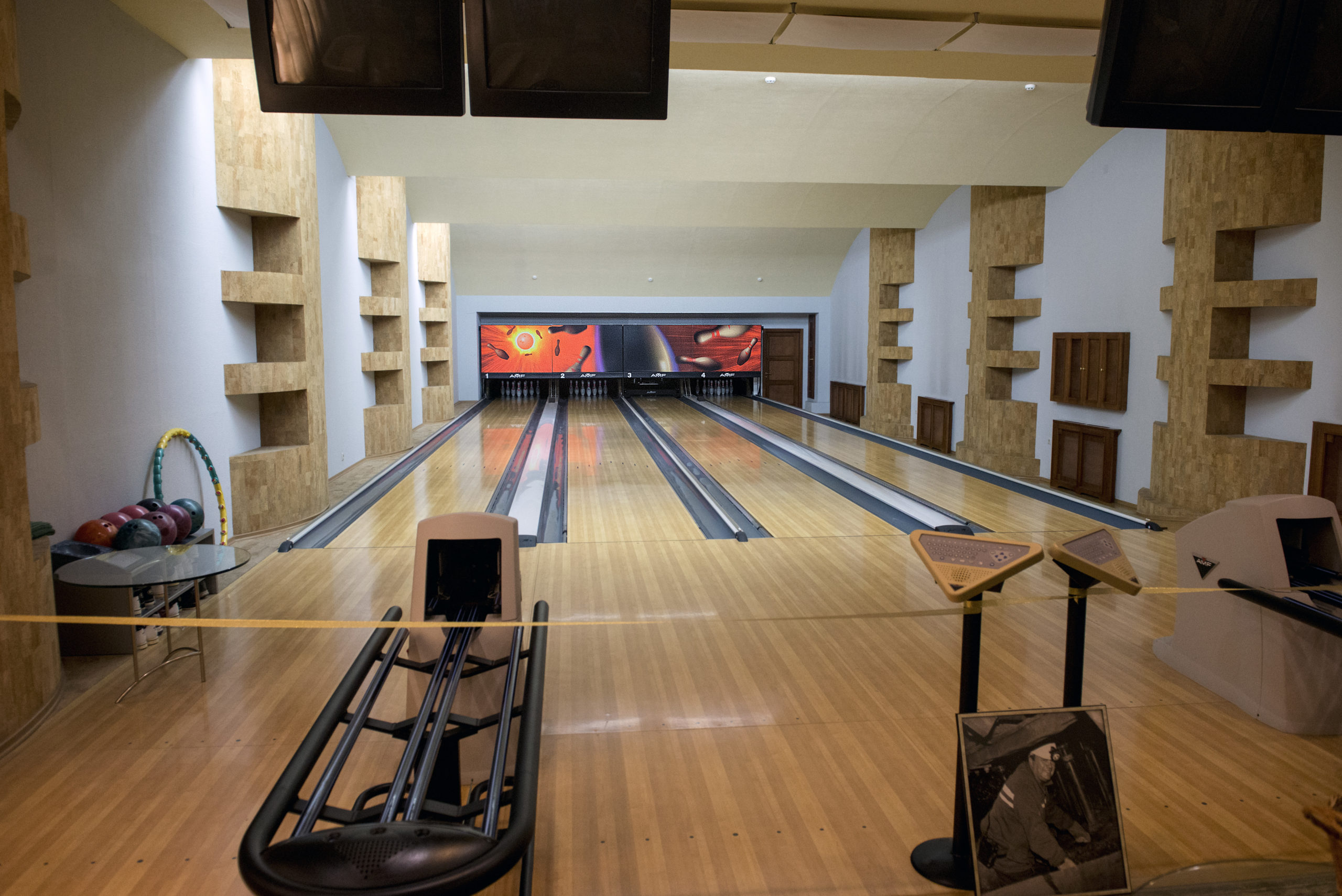
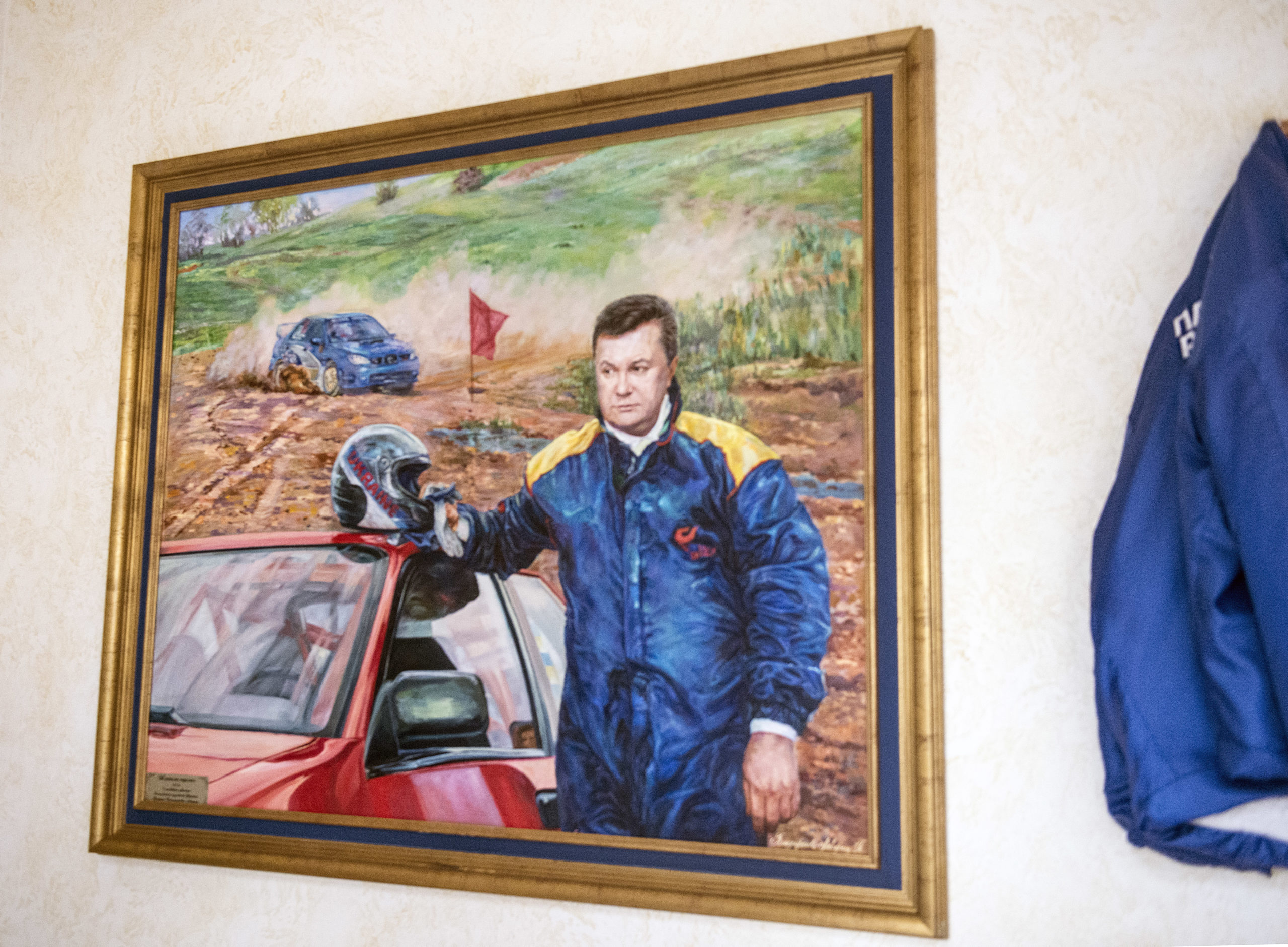
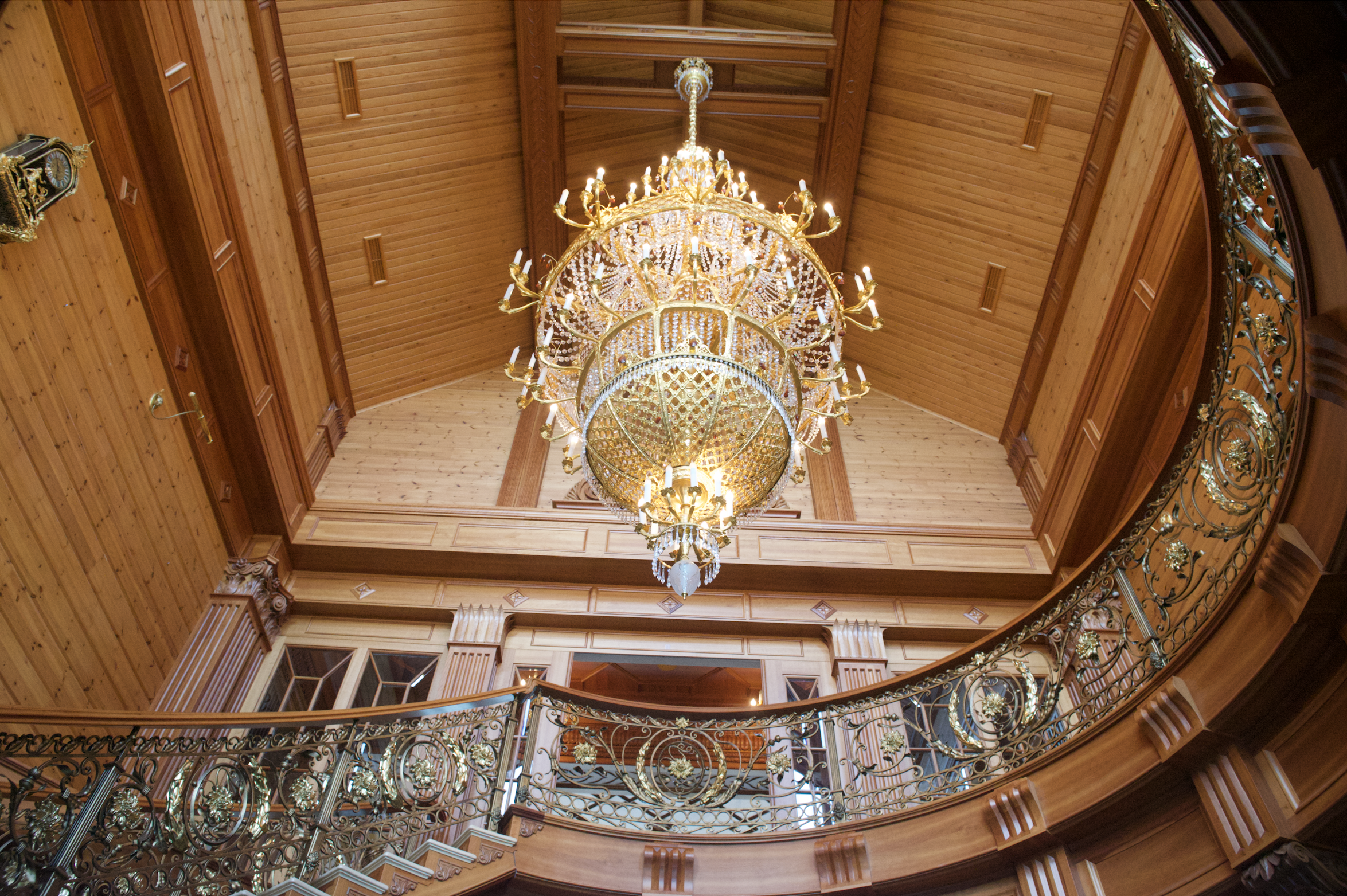
Petro Oliynik unlocked rooms for us one by one. In a long article about Mezhyhirja, Darmon Richter quotes Oliynik (Petro Oliynik speaks!) as explaining the flag he wore as a cape: “If you pour blood over Ukraine’s yellow and blue flag, it becomes this black and red one. This is how our flag looks in time of revolution and struggle.”
As we walked along he locked each room behind us before opening the next and, since he remained silent, we felt like we should, too, in a big empty house. The oddball moments while he locked the previous room and moved us ahead to the next one cast an undeserved reverence on Honka House.
We didn’t get to see all of Yanukovych’s riches, Yanukovych’s golf course, Yanukovych’s private marina, Yanukovych’s private hunting lodge or Yanukovych’s riding club (A surefire way to the president’s heart. The presidents of Poland and Turkmenistan gave him gifts of horses). We missed Yanukovych’s tennis center, his underground shooting range, his garage complex for the presidential collection of 70 cars and his helicopter pad and hangar.
By the time of our visit Yanukovych’s private zoo (ostriches, kangaroos) had also been removed, but Yanukovych’s escape tunnel hadn’t. It connected the separate reception building with the private residence and had, en route, two escape doors. Yanukovych had escape doors from an escape tunnel. Fleeing despots can’t be too careful.
Viktor Yanukovych possessed one last item in particular, a loaf of bread made of gold, that made Yanukovych something special. Objects of value might be useful but not beautiful, or they might be beautiful but not terribly useful. With the Golden Loaf Yanukovych rose up as an icon of tacky and his Golden Loaf, both ugly and useless, also became an icon; miniatures were sold as tourist trinkets.
The actual Golden Loaf was life-sized, weighing 2 kilos and made out of gold, a gift from the President of a public joint-stock manufacturer of industrial equipment. If widget salesmen can gift golden loaves of bread, imagine the upper limits. Many, many people sought the favor of the former president through gifts. The coup de grâce, the best saved for last, is surely the Spanish galleon parked out in the yard.
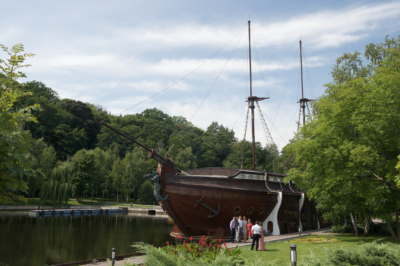
The identity of the bestower of the galleon isn’t clear. Some say it was a gift from the mayor of Dniepro, and if so, it reveals a wholly unique league of influence buying. Others claim it was bestowed by Rinat Akhmetov, stell industry magnate and the richest man in Ukraine, as a birthday gift. It’s a full-size replica of a 16th-century Spanish galleon, with restaurant. The Akhmetov version of the story has the galleon’s cost at more than $30 million.
•••••
Within a week after Yanukovych fled to Russia, Petro Oliynik and others turned up at the Honka House. A man named Denys Tarachkotelyk, another Maidan protestor, imposed himself on the estate for a time, calling himself its “commandant”.
Having overthrown its leader Ukraine was in turmoil for a time, but with Yanukovych gone, parliament adopted a resolution straight away to transfer the Mezhyhirya estate, the 340 acres of grounds, to state ownership. Legal wrangling held that up for some months, but at least before the war it was a popular park.
A lot of wrangling has gone on as to who owns the Honka House itself, and a whole lot remains unclear even now about Mezhyhirya’s administration. Petro Oliynik has said the owner is a company run by Yanukovich’s head of security, whose whereabouts, he says, are unknown. Which doesn’t explain why Oliynik remained in residence at least until 2019. Tour companies still, in 2019, peddled a rumor that Oliynik paid for upkeep of the entire estate with revenue from entrance tickets.
Theories about who really runs Honka House range from opaque to preposterous. In his article about Mezhyhirja, Richter recounts that finally in 2018 the Asset Recovery and Management Agency of the Ukrainian government took ownership of the residency. Which still doesn’t explain what Petro Oliynik was doing, still wearing his cape, conducting mute tours of the Honka House a year later later in 2019. Then came the pandemic and as far as I can tell, Petro Oliynik has since disappeared.
•••••
By 2019 Kyiv was in full flower and justifiably proud of what it had become. In 2013 the world’s luxury brands had still taken a pass on Kyiv. McDonald’s and the Gap and Marks and Spencer were there, sure, but the rest was homegrown. By 2019 the world was at Kyiv’s door.
Corruption persisted in formerly state owned firms, but in 2019 there was far less of the pervasive petty indignities poor people in much of the world still negotiate every day. And look at that skyline. The green space and the parks down by the river. The brand new culinary scene. With a bohemian vibe and a lot of pride in what it was busy becoming, Kyiv in 2019 was inexpensive, alluring and bustling.
Alas, as it turns out, a newfound confidence, a cool bohemian vibe and inexpensive living don’t guarantee impenetrable borders. And so eight years after the Revolution of Dignity, in February 2022, along comes (depressingly, there he is again) Russian President Vladimir Putin.
The excesses of Yanukovych and his kind were precisely the things Ukraine rejected. Regular people laid down their bets on the Maidan ten years ago this winter, and for those bets they are still dying.
•••••
[Ukraine is persistent: The EU is expected to announce the opening of accession talks for full membership for Ukraine in a December 13th-15th summit of European leaders in Brussels. Earlier this month, European Commission Chair Ursula von der Leyen said Ukraine had completed “well over 90 percent” of the prerequisites set out by the EU.]
I have also write from time to time here, on Substack.
